Welcome to binNotes | redThread™
Inspired stories about wine and taste makers.
By L.M. Archer, FWS | Bourgogne ML
Each first Friday of every month through 2016, I’ve invited some of my fellow wine writers the opportunity to join me here on binNotes | red Thread™ and share a feature on some rare, obscure, or under-appreciated wine region for which they feel a special passion.
Selfishly, this allows me to experience new perspectives beyond my myopic world of pitching, traveling, word-smithing, and deadlines.
It also allows you the opportunity to experience some great wine regions through the eyes of those whose expertise I respect.
I hope you enjoy their stories as much as I do.
❦❦❦
Guest Writer Series | № 6 | Caroline Henry on Bioenergetic Wines
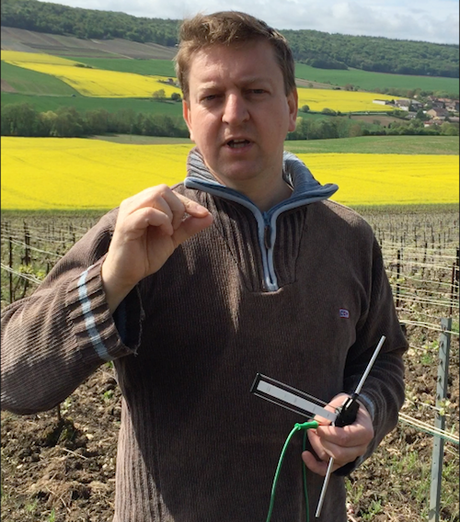
Champagne Franck Pascal uses a Lecher antenna to measure positive energy levels in the vineyards where he grows champagne grapes for his champagne wines.
Bioenergetic wines: one step beyond biodynamic wines?
by Caroline Henry
I very clearly remember the first time I had a wine produced according to the biodynamic principles: the moment I had the wine in my mouth I felt my energy increase. I know this is a very odd thing to say, but I literally I felt better and ready to tackle the world. The story becomes even stranger when you consider I was tasting a vin clair, the still wine from which champagne is made. Vins Clairs are often thin, highly acidic and therefore difficult to taste, thus my amazement by the energy of the vin clair especially compared to the older vintage champagne… But the 2011 vins clairs of Franck Pascal clearly outshone his champagnes when I tasted them at Terres et Vins de Champagne in May 2012.
Pascal is a biodynamic grower so my first thoughts were that the extra years of biodynamic growing were the reason for the vibrancy, yet something did not feel right. I tasted many other biodynamic vins clairs at the same tasting and none of them had the same effect. A year later, when I had the same experience I bombarded Pascal with questions and he reluctantly spoke about bioenergy.In harvest I got a glimpse at the practicalities of this when I saw Isabelle Pascal sitting in front of a tank and holding it like one imagines holding one’s pregnant partner’s belly. I had to wait another year till June 2014 before the Pascal’s were ready to open up a little more and share part of their bioenergy concepts.
They came to bioenergy through Isabelle’s cancer. Bioenergy is first and foremost an alternative medicine stream, very much based on the Chinese Qi-Gong healing. The healing occurs by realigning a person’s energy field so blockages disappear. The Pascals combine this with elements they learned in a Soul Therapy workshop. Soul therapy aims to heal the soul (also known as the energetic body) as well as the physical body. It is based on the principle that soul problems will spill over in the physical body, therefore it aims to preserve the balance of the soul as well as heal it; for when the soul is healthy, the physical body will be as well.
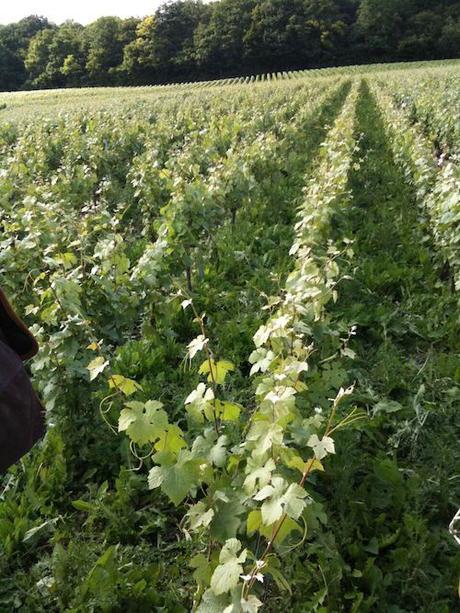
Champagne Franck Pascal employs bioenergetic vineyard practices.
From 2007, the Pascals worked together on a weekly basis with Hervé Jestin, Champagne’s most holistic oenologist, to create an energetic protocol to make stable wine without sulfur. The protocol was perfected over the years and used on the complete 2011 vintage, hence the first wines I tasted in 2012. After the disastrous 2012 harvest, Franck and Isabelle, realized that in extremely wet years with great mildew pressure, biodynamic farming was not enough and started to think about expanding their energy concept to the vineyard. First trials occurred in 2014 and ever since they have expanded the experiment.It is important to note that Franck and Isabelle treat the vines by energetic communication and have eliminated all sulfur and copper treatments. Biodynamic treatments are still being applied.
Jestin has used the same principles he perfected with the Pascal’s on the wines of his clients, such as Leclerc-Briant, Le Chateau d’Avize, Benoît Marguet, Laurent Bénard and Marc Augustin. Only the latter really practices bioenergy on a deeper level. Augustin also came to bioenergy via his wife, Emannuelle, who had opted for an alternative and energy based reflexology training and became interested in Homsham. Homsham is a sensitivity driven way of homeopathy, which divides the reality up in 5 realms (mineral, vegetable, animal, mental and homeopathic). Healing is centered on reestablishing the balance between the 5 realms. In one of the workshops Marc attended with Emmanuelle, he met Alain Glauda, a geobiologist, who specialized in realigning the energy in agriculture environments. Glauda worked with Augustin to optimize the energy in his vineyards from 2014 onwards applying some of the Homsham principles.
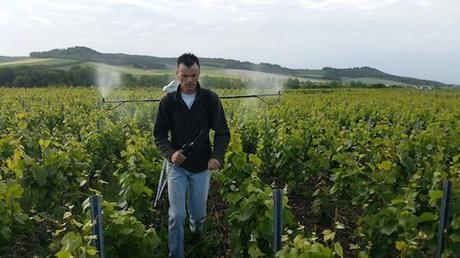
Champagne Marc Augustin utilizes bioenergetic and biodynamic farming practices for his premium wines.
Eric Schreiber, one of the three biodynamic pioneers in Champagne, is another vigneron who turned to bioenergy in the vineyard. He was also disappointed about the efficiency of long term biodynamic farming in 2012. Schreiber was introduced to bioenergy when he worked with Jestin on making his first champagne without added sulfites. When his partner enrolled in a geobiology course in 2013, he joined her and since 2014 he has been experimenting with re-establishing the energy in the vineyard as well. Schreiber has used rocks (menhirs) which balance the energy field on a continuous base. His first test results like Pascal’s have been positive. A last person in Champagne who has been applying the bioenergy principles started in the vineyard, rather than the winery. Stéphane Hardy worked with agronomist Amélie Gouez and geobiologist Alain Glauda to rebalance his vineyards in 2014. However his wines are not produced according to the bioenergetic principles yet.
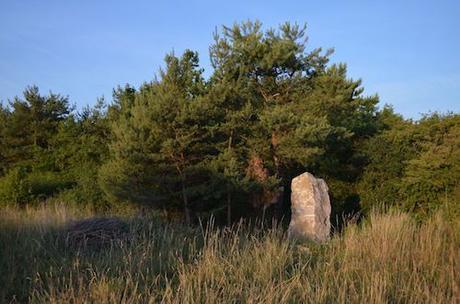
Champagne Schreiber places menhir, or stones, throughout his vineyards to retain healing energy for his vineyards that produce champagne.
I have done quite a bit of research but very little is known about bioenergy in the rest of France. A few people may have dabbled with it in the winemaking but have been reluctant – just as the Pascal’s were – to talk about it. Several winemakers have built their wineries according to the Feng Shui principles, which are also energetic principles but this is as far as their energy involvement has gone thus far. It will be interesting to see if bioenergy has the possibility to add yet an extra layer of purity to biodynamic wine making on a larger scale, in the way biodynamic farming complemented organic farming last century.A big positive factor which may contribute to this will be the timeframe Pascal needs extend his bioenergy experience to his whole 7 hectare vineyard for this will mean that a new set of viticultural rules have been created. And if one can farm without sulfur or copper protection in the difficult climate of Champagne, it should be possible everywhere.
About the Author:
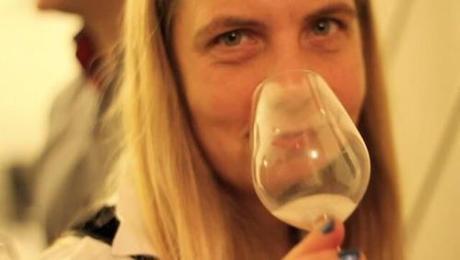
Caroline Henry is a freelance writer for wine-searcher.com and decanter.com who lives in Champagne and specializes in terroir champagne, a concept which she believes can only be achieved by eliminating herbicides in the vineyard.She further feels very strongly about organic and biodynamic viticulture and has done extensive research on the topic, mainly in Champagne but also in the rest of France. Her first book “Terroir Champagne: the Luxury of Sustainable, Organic and Biodynamic Cuvees” will be out in early fall 2016. You can read more of her stories or follow the champagne harvest live on her blog www.missinwine.com.
❦❦❦
Story and photos reprinted by permission of the author, Caroline Henry.
Copyrighted 2016 binNotes | redThread™. All Rights Reserved.

